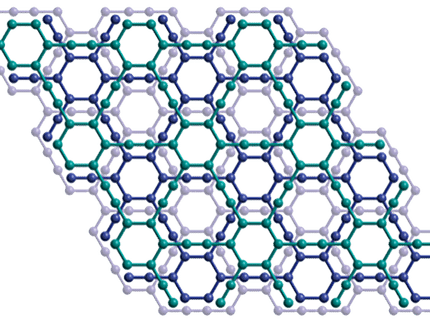Researchers discover new properties of World's thinnest material
graphene oxide, a single-atomic-layered material made by reacting Graphite powders with strong oxidizing agents, has attracted a lot of interest from scientists because of its ability to easily convert to graphene — a hotly studied material that scientists believe could be used to produce low-cost carbon-based transparent and flexible electronics.
But to Jiaxing Huang, assistant professor of materials science and engineering, and his research group at the McCormick School of Engineering and Applied Science at Northwestern University, graphene oxide itself is even more interesting. Huang and his group have studied the material for years and have discovered how to assemble these soft sheets like floating water lilies pads. They also used a camera flash to turn them into graphene, and invented a fluorescence quenching technique to make them visible under microscopes.
Now, working with Kenneth R. Shull, professor of materials science and engineering, they have discovered that graphene oxide sheets behave like surfactants, the chemicals in soap and shampoo that make stains disperse in water. The team's results are published online in the Journal of the American Chemical Society.
Graphene oxide has been known in the scientific world for more than a century and was largely described as hydrophilic, or attracted to water. But Huang and his research group thought that graphene oxide should be amphiphilic, a property of surfactants that can both attracts and repels water, because part of the graphene oxide structure is actually water repelling.
"We view graphene oxide as a soft material," Huang says. "For example, it is essentially two-dimensional polymers composed of carbon, hydrogen and oxygen. They are also colloidal particles with very exotic shapes."
To test their hypothesis, Huang and his group put graphene oxide in carbonated water. They found that the sheets can hitchhike onto the rising bubbles to reach the water surface — just like a surfactant would do. Next they found that graphite oxide can disperse oil droplets in water — just like a surfactant would.
This new insight into a fundamental property of the material, according to Huang, is important for understanding how graphene oxide is processed and handled. It could lead to new applications for the material.
Its surfactant properties mean it could be used as a dispersing agent for insoluble materials, like carbon nanotubes. Common surfactants are non-conducting, so when used as a dispersing agent for conducting materials, they need to be removed from the material. Graphite oxide, which turns into conducting graphene through heating, would actually help conductivity.
The surfactant behavior inspired another exciting discovery — that water surface can act as a filter for separating graphene oxide sheets by size.
"The smaller the sheet, the more water-liking it becomes, so eventually it will sink into water," Huang says. This effect makes it easier to harvest large sheets of graphene oxide, which are more useful for graphene device fabrication.
Topics
Organizations
Other news from the department science

Get the chemical industry in your inbox
By submitting this form you agree that LUMITOS AG will send you the newsletter(s) selected above by email. Your data will not be passed on to third parties. Your data will be stored and processed in accordance with our data protection regulations. LUMITOS may contact you by email for the purpose of advertising or market and opinion surveys. You can revoke your consent at any time without giving reasons to LUMITOS AG, Ernst-Augustin-Str. 2, 12489 Berlin, Germany or by e-mail at revoke@lumitos.com with effect for the future. In addition, each email contains a link to unsubscribe from the corresponding newsletter.




























































